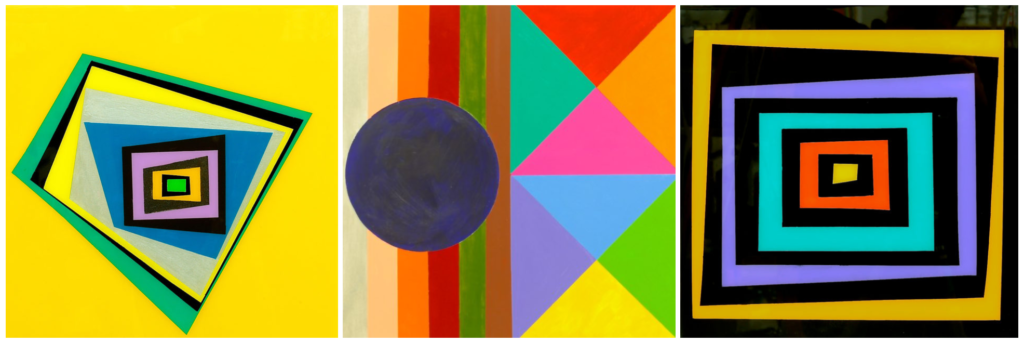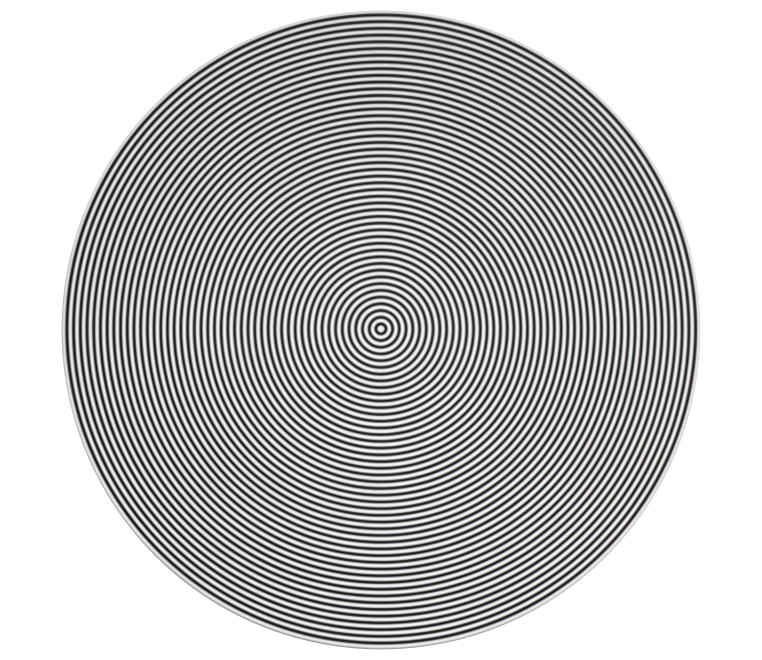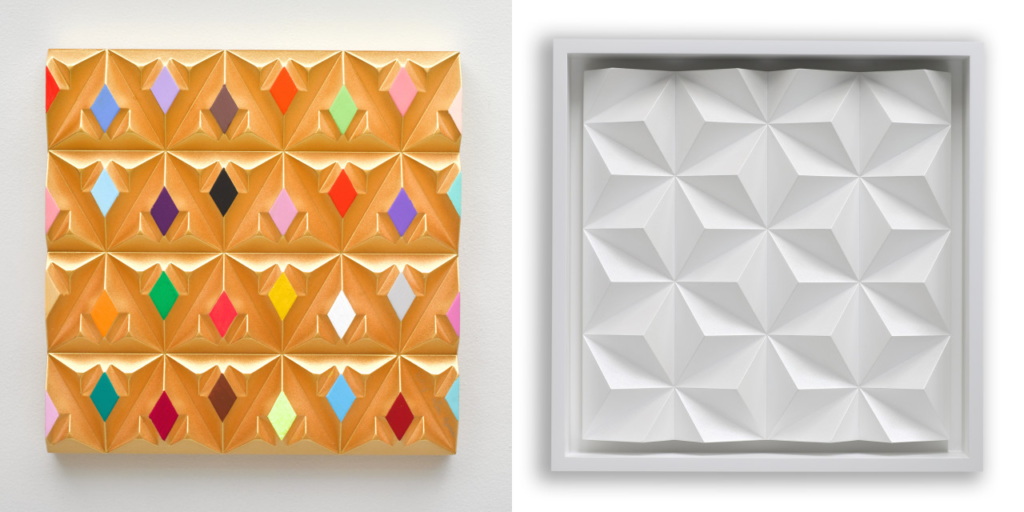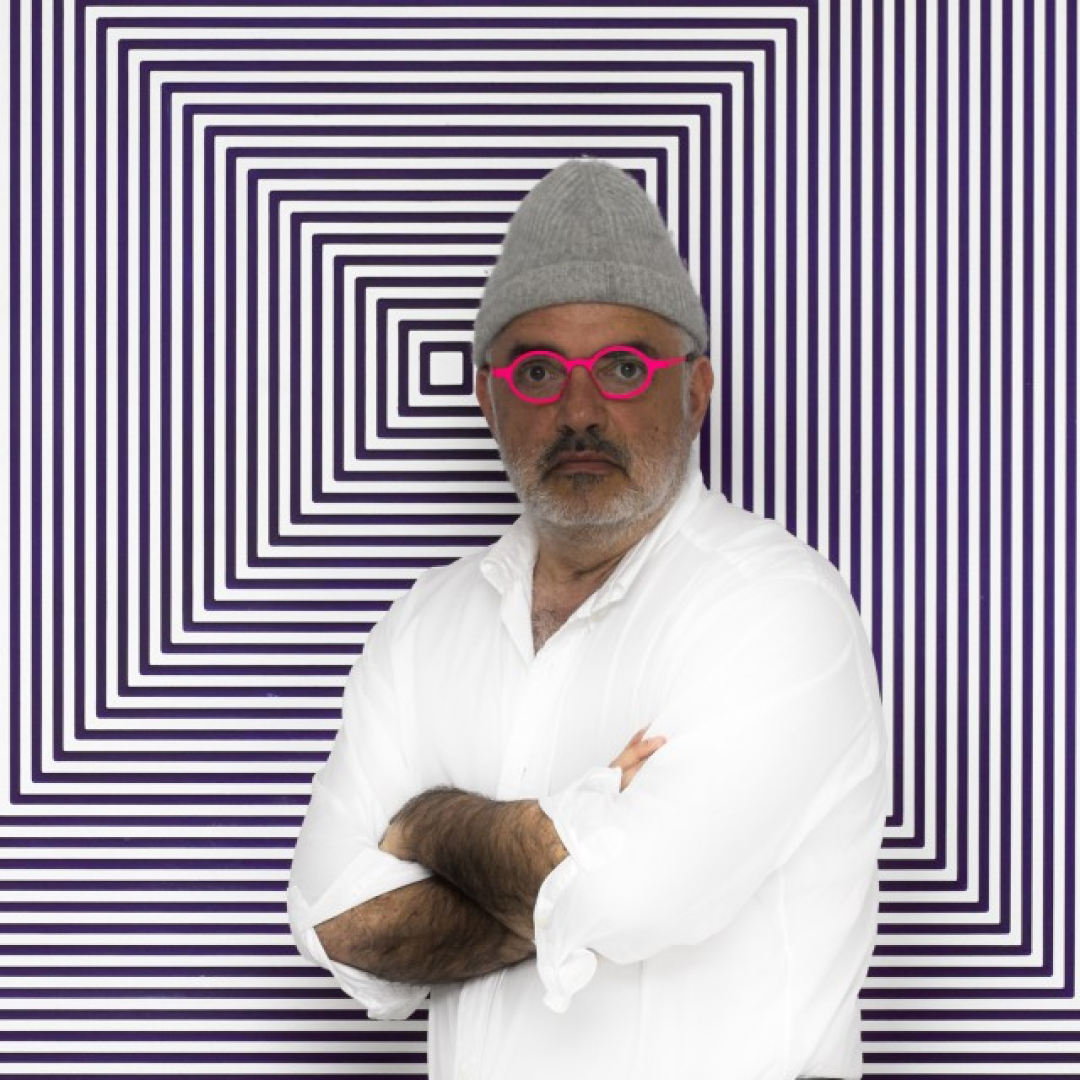Ron Agam is an artist and thinker whose art and thoughts go deep into your soul. Before taking up painting later in life, he made a career as a photographer, exploring the world and human beings through the lens of his camera. But as the son of the celebrated artist Yaacov Agam, painting seemed to be his calling.
I’d like to start by asking about your transition from photography to art. Was there a specific moment in your life that marked this shift, or was it more of a gradual process?
Ron Agam: Just today, I watched a video of myself at seven years old, painting next to my father. From what I can recall, I started painting before I could even talk. My father would set me up with paper, crayons, and colors to keep me occupied while he worked, and I spent countless hours by his side.
Around the age of six, I also fell in love with photography. My father had a full-time photographer in his Paris studio, and I was mesmerized watching him develop photos in the darkroom—the magic of an image appearing on a blank sheet of paper captivated me. So I started to photograph very early on. Later I attended regular school, became interested in architecture, and eventually went to architecture school in Paris. My drawing was more technical than creative, and I didn’t think much about painting or drawing. Honestly, the very idea of making art felt overwhelming—what would be my contribution when my father is one of the most celebrated artists of his time? It was a handicap that took me forty years to overcome.
It wasn’t until my early 50s, after a personal crisis, that I started making art. I locked myself away in my New York studio and began to paint. At first, it was just an experiment, but over time, I gained confidence and created a small body of work. Friends who saw my paintings loved them and encouraged me to go on. Eventually, a gallery owner visited and suggested we plan a show. And that’s how, at 52 years old, I finally returned to art.

How do you feel about being a painter now?
Today, at 66, I still find it incredible that I became a painter—something I never imagined for myself. I never thought I had the talent or ability. But I worked really hard, pushing myself in ways I never had before. The real turning point, though, was reconnecting with those early childhood memories.
Growing up in Paris with my father, I was immersed in art and culture—visiting exhibitions and meeting artists almost every day. I didn’t realize it at the time, but those experiences really stuck with me. When I started painting, all of that came rushing back, filling me with an energy that demanded expression.
Over time, painting became more than just a challenge—but an addiction, in the best possible way. To me, it is something I can’t imagine myself without. Looking back, my path to becoming an artist feels natural and logical, maybe even predestined.
How has your background in photography and architecture influenced your art?
Photography and architecture have had a huge influence on what I do today. Photography was more than just a passion—it was a way of life for me. I specialized in portraiture, which attracted me because it is so intense and meaningful. You can’t make a good portrait if you don’t take the time to get to know and feel the person in front of you. I often photographed rabbis and older people—their faces reflect a wealth of experience and wisdom. Architecture, on the other hand, gave me a love for lines, minimalism, and structure, and that sense of order naturally found its way into my painting. Another significant influence on my painting is my experience in the digital world as a photographer. The interplay between the digital and the analog has become a central theme in my work as a painter.
That's an interesting point about the connection between the analog and digital worlds. How does working with the physicality of paint and canvas feel compared to creating digitally?
When I hold a brush, dip it in oil paint, and touch the canvas, it feels deeply emotional—like an act of love. My painting process is thoughtful and structured most of the time. I calculate every move in my mind before I begin. The digital world, on the other hand, is much faster and less emotional. It requires a different mindset, but it’s equally powerful.
I once wrote an article titled, What If Picasso Had a Mac? In it, I explored the synergy between creativity and technology, highlighting how advancements throughout history have shaped the ways artists create. Actually, no shift has been as radical as the introduction of the digital world into art, and it’s fascinating to see how it continues to evolve and inspire.

Your paintings are mostly geometric, and you often say that shapes and colors are a way to express yourself and your emotions. What kind of energy do you feel behind these shapes and colors, and how do you perceive it?
Geometry is my visual language. I grew up surrounded by geometry—lines, colors, and shapes. My father’s art dealer in Paris, Denise René, was the leading dealer in geometric abstraction and kinetic art, representing icons like Kandinsky and Mondrian. I was also influenced by Russian Constructivism, with its clear lines and emphasis on geometry. As a photographer, I worked in the figurative world, capturing reality through the lens. But when I started painting, shapes and colors became my natural mode of expression.
Could you talk more about your creative process? Do you start by developing a concept and then work step by step, or is it more of a flow?
It depends. Some of my best work has come about almost by coincidence—or something close to it. Letting things flow is the essence of creativity. At any given moment, everything you’ve absorbed as a human being finds its way into artwork. The most important thing is to free yourself and let it happen.
I often work at night—when there’s no interaction with the outside world, no distractions, just stillness. It’s almost meditative. In those quiet moments, I feel a deeper sense of time. It’s in that floating silence that I’ve created some of my best work.
You sometimes mention that New York has been a great inspiration for you. Does that have to do with the geometric shapes of the city as well?
New York has definitely influenced me. But when I first arrived there from Paris, I was shocked and overwhelmed, looking up from the taxi and seeing towering skyscrapers everywhere. The city felt too fast and brutal compared to relaxed and romantic Paris. That intensity is reflected in the city’s geometry—its sharp angles and bold lines. Over time, I’ve come to love New York, though it’s a love-hate relationship. New York pushes you to extremes. You can’t just sit back and relax here, you have to constantly prove yourself. In Paris, you can spend six years in the same café, having the same conversations, and no one would ask what you do. In New York, that’s unimaginable—everything is about action, competition, and speed.

Do you find refuge in nature from the hustle and bustle of city life? What does nature mean to you overall?
The most significant thing in civilization, I think, is the creation of religion. And the major world religions were born in deserts—whether it’s Moses, Muhammad, or even Jesus to some extent. That disconnection from the ordinary world gave rise to incredibly high spiritual aspirations. Nature takes you out of your everyday life and puts you in front of something much greater— the very essence of the world created by God.
Since you mentioned religion, I’d like to ask which philosophies and thinkers have shaped you and your perspective on the world.
I’ve always felt a sense of duality in my life. On one side, there’s the rich heritage of Jewish philosophy—the Torah, Talmud, Mishnah, and Kabbalah. On the other, there’s French culture and European culture in general. Both influences shaped my view of the world and gave me a broader understanding of it because I never focus on just one perspective while ignoring the other. My grandfather was a Kabbalist, and my father is a deeply spiritual person—conversations with him are never small talk. Being raised in that environment taught me to see life outside the mundane. That’s why many of my works are symbolic on several layers.
What are you most grateful for in your life?
One of the most profound influences in my life has been meeting incredibly spiritual people, many of them connected to religion. What always struck me most was their apparent simplicity—the way they seemed so grounded and humble. There’s a kind of humanity and depth in these individuals that’s extremely rare, something you don’t encounter in everyday life. Spending time with them lifts me up in ways I can’t find with most people.
If you were to choose one word to define the world of today, what would it be?
One concept that resonates strongly with me is disruption. We experience it almost every moment. A hundred years ago, disruption didn’t carry the same weight it does now. It can lead to incredible progress, but it can also take a darker turn.
What kind of world do you want to see around you?
I'm hoping and dreaming that humanity will come together in peace.
Interview by Inna Logunova
Photo courtesy of Ron Agam
